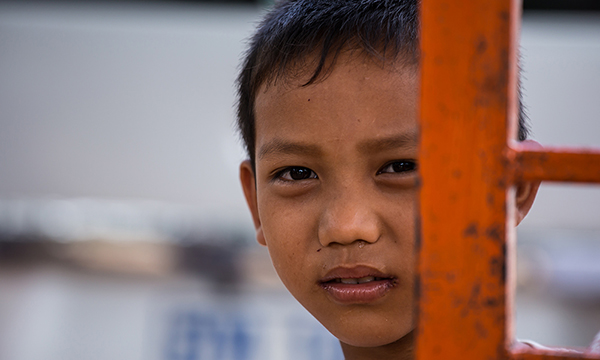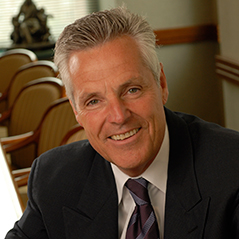
K-Smile love / Shutterstock.com
.
What is our job as child welfare professionals? What should our priorities be? How should we measure success?
The answers to these questions have shifted over the past 25 years.
In some ways, our mission is clear and unchanging: to keep children safe and healthy, to provide as many of them as possible with secure, permanent homes and to keep families together whenever possible. But today, thanks to hard work and innovative programs developed across the country, foster care populations in many cities across the country are a fraction of what they once were and many of us are achieving excellent results with programs geared toward avoiding out-of-home placement for the vast majority of children and families we serve.
 I believe the time has now come for us to think more expansively about our missions — for us to recognize that, although health, safety and permanency are crucial first steps, they are not enough and probably never should have been. We are allowing too many children to reach adulthood without providing them the tools they need to thrive.
I believe the time has now come for us to think more expansively about our missions — for us to recognize that, although health, safety and permanency are crucial first steps, they are not enough and probably never should have been. We are allowing too many children to reach adulthood without providing them the tools they need to thrive.
Safety and permanency stand side by side with well-being as pillars of child welfare and I am encouraged that we are now starting to see considerable discussion around well-being. To me, the cornerstone of future well-being — of preparing children to grow into independent, productive adults — is education. Quite frankly, to my mind, no serious discussion of well-being can take place without education being front and center.
Education is the best path toward a successful future; and I believe that, after keeping these children safe and healthy, education should be our highest priority as child welfare professionals. We need to have a national conversation about what that means.
We all know the consequences of allowing the status quo to continue. Without adequate education, one in four of our children will eventually be incarcerated. One in five will become homeless. Only half will graduate from high school and of the 10 percent who eventually attend college, very few will graduate. Far too many of them will simply move from the child welfare system to the criminal justice system.
My organization, The New York Foundling, has had success with a number of educational initiatives, but we are certainly not alone. In New York and around the country, programs like the SLAM Justice Scholars program of Graham Windham, First Star Academies, Center for Foster Success at Western Michigan University, the College Readiness Program of United Friends of the Children in Los Angeles and the Children’s Aid Society’s Community Schools Model are making tremendous strides.
Public school systems need our help. The children with the greatest needs reside predominantly in urban areas with large school systems that need to focus on making the most progress with the most students. Teachers teach to “the middle of the classroom,” lacking the time or resources to address the unique needs of foster children — who tend to be the most marginalized students in the most marginalized schools in the most resource-deprived districts.
The good news is that we have found success with several programs that are reaching increasing numbers of children:
- A charter school in the Bronx, Mott Haven Academy, where two-thirds of the students are in the child welfare system. Educators receive additional training, child welfare professionals are integrated into the school and the implementation of a trauma-sensitive environment and curriculum enables students to succeed at an even greater rate than their peers in the community and in the city as a whole.
- A Foundling program called Road to Success, which provides tutors/mentors for older children in foster care. They meet weekly in a location of the student’s choosing, lowering the chances of “no shows.” These tutors/mentors, who are often not much older than the students themselves, can relate to these youth as both peers and role models and provide a crucially needed consistent and reliable relationship. This program has increased promotion rates, graduation rates and college enrollment rates.
- Expanding on the tutor/mentor model applied to younger children, a partnership between the City University of New York and The Foundling provides resident assistants (RAs) who are full-time employees with backgrounds in education and/or social work. RAs live among the students on City University campuses, help them navigate the college environment, stay current in their coursework and provide whatever remediation may be required.
These educational initiatives are merely a beginning. And clearly, certain programs will be easier to scale than others. Building mentoring programs, for example, requires relatively little upfront capital and could probably be replicated in just about any type of community. Creating a charter school built around a trauma-sensitive curriculum requires more time and resources, but even in that case, if we are all open about sharing information, there may be lessons learned that could be translated into other school environments.
Government needs to fund programs like these and others developed by agencies in local communities around the country. And we all need to emphasize them as part of our mission. We need to view these programs as models and communicate with each other in ways that enable us to share information, build on each other’s work and create a full menu of educational services that can become part of our child welfare systems.
Expanding our definition of child welfare is not without challenges. We can start by acknowledging that education is part of our mission and, indeed, among our highest priorities.
Bill Baccaglini is president and CEO of The New York Foundling, one of the oldest and largest organizations in New York serving at-risk youth and their families.





























